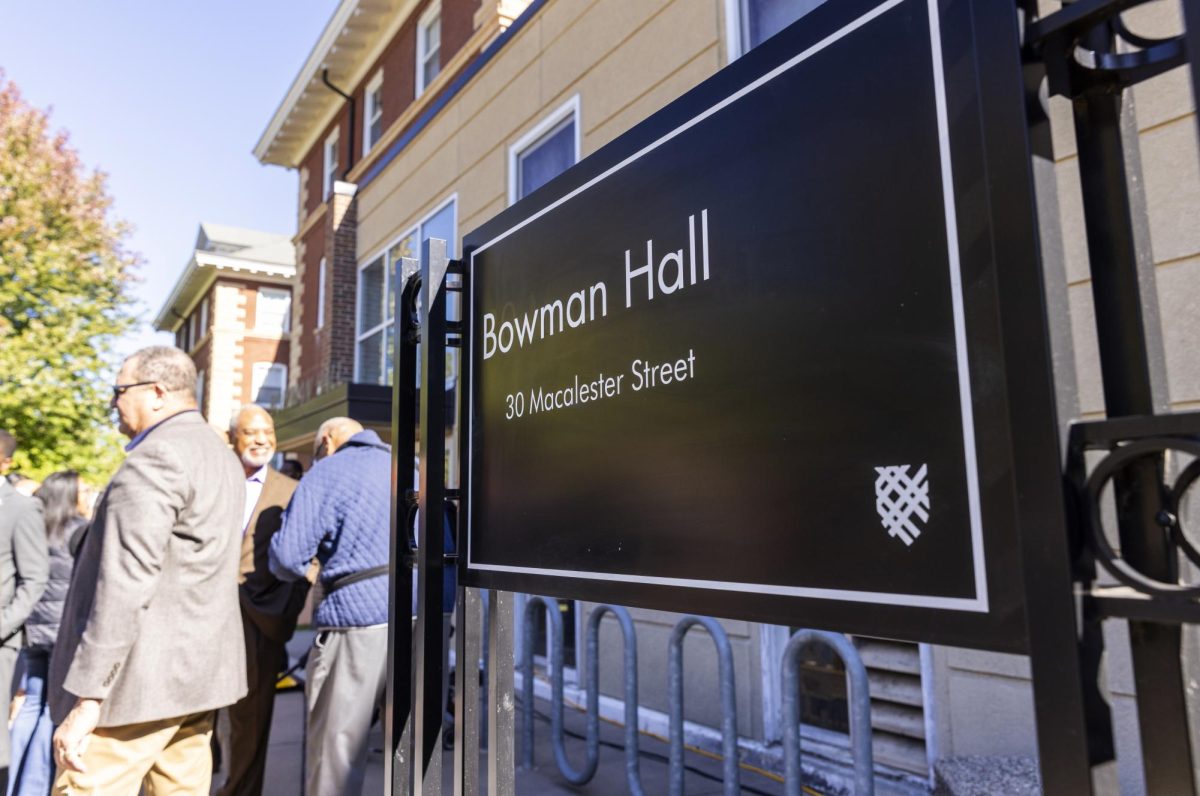This year, the American Anthropological Association (AAA) awarded Macalester Professor Dianna Shandy the 2018 Gender Equity Award for her work in developing a policy to properly address sexual assault and harassment within the association. The project began to take shape a year ago, after Shandy and her colleague Gabriela Torres were appointed to the two gender and equity seats within the AAA’s leadership body. Shandy and Torres were surprised by the association’s lack of a comprehensive policy for sexual violence and sought to create a policy that could fully address situations of sexual assault and harassment within the workplace.
“I just assumed we had some kind of coverage as I think many academics assume that their discipline does cover this,” Shandy said. “To some extent we, as most associations, have some form of conduct as professional responsibility but it didn’t really single out the kind of sexual harassment and sexual assault policies which are needed.”
As Shandy and Torres turned to other associations’ policies as possible models, they were shocked by the conditions they found these policies in. They found that many workplaces’ sexual assault and harassment procedures are generally reactionary rather than preventative.
“Where you find really robust policies with adjudication and where they’ve been to the lawyers, and really worked on this, is the professions that have had problems, and they’ve had to do this in response,” Shandy explained.
While writing the policy, Shandy and Torres sought to highlight two elements in particular of creating environments where sexual assault and harassment are addressed properly and prevented: the importance of having diverse leadership representation and the necessity of understanding how gender plays a role in sexual violence, especially within the workplace.
Shandy believes that having diverse representation is necessary in every undertaking, whether in governing an association like the AAA or writing its sexual assault and harassment policy.
“For me diversity is not about putting people around the table because it presents a certain image,” Shandy said. “I just genuinely believe that when you get a diverse group of people from different life experiences, not just related to phenotype—they have these different experiences that prompt them to ask different questions because they perceive the issue in different ways.”
The writing of the AAA’s Sexual Assault and Harassment policy reflected this strength in a variety of perspectives. Shandy and Torres assembled what Shandy refers to as “a working group that was very diverse, very intergenerational,” which workshopped and constructed a policy that blended their own proposals with the policies of other similar disciplinaries’.
Multiple points of views are also reflected in the implementation of the policy through the role of two ombudspersons who can combine efforts to find the proper approach to situations of sexual violence. As Shandy puts it, “when members bring issues forward they can put their heads together to figure out how to advise the person or what the next steps might be.”
Shandy also emphasized her and Torres’ goal to give voice in their policy to the gender element of sexual assault and harassment within the workplace. To them, sexual violence can be deeply connected to issues of gender inequality and for this reason it was necessary to express an intolerance for sexism within the AAA’s policy. Shandy explained that one must have an awareness of injustice that we often allow to go unnoticed. As she noted, it is essential to consider, “the ways in which specific episodes of sexual violence are related to these larger processes, related to gender and equity, and sexual harassment in the constant way that many of us just navigate through.”
Shandy and Torres’ policy had to address sexual assault and harassment within the discipline of anthropology in a unique way due to the aspect of field work within the profession.
“It takes you out of your normal work environment and it takes you out of your support system and home support system,” Shandy said of the often dangerous nature of anthropology field work. “The idea is that it increases one’s vulnerability in terms of what one’s willing to put up with and what one has to put up with and just what rules apply in different settings.”
Yet within field work, Shandy noted that while the AAA’s policy “primarily talks about how anthropologists engage with other anthropologists… it doesn’t talk as much about anthropologists and non-anthropologists.” However, this technical limitation offers what Shandy calls a “historical pivot” as it is “making us all think about how we incorporate this into teaching research methods.”
Hence, one of the key components of the AAA’s Sexual Assault and Harassment Policy is the educational opportunity it creates for establishing an understanding of how to address sexual violence as a central part of preparation for any discipline. Shandy hopes that this will be reflected by using similar policies within schools’ curriculums.
“Many of us have already included something about our ethics statement as a discipline,” Shandy explained “so this just needs to be, ‘here’s the ethics piece, here’s the sexual harassment and assault piece.”
By incorporating sexual assault and harassment policies into standard education, as Shandy puts it, “not singling it out as special but starting to make it part of the fabric,” educators can work to create an environment where sexual violence is always addressed in a thorough way. Thus, these policies play a role in “normalizing that as an expectation.”
The American Anthropological Association’s Sexual Assault and Harassment policy serves as a testament to a society that is beginning to take notice of sexual assault and harassment and push for a change in procedure and a change in workplace environment. Shandy noted that her and Torres’ work joined a broader movement of many other professional disciplinary associations taking similar steps: “what makes this more interesting than just ‘this is what the anthropologists are doing’ is this is what all disciplinary associations are doing, or should be doing, or will be doing.”







Austin Campbell • Sep 11, 2019 at 11:54 am
It’s laborious to seek out knowledgeable people on this subject, however you sound like you already know what you’re talking about! Thanks
Ruth Morrison • Sep 10, 2019 at 6:25 am
I’ve really noticed that credit restoration activity really needs to be conducted with tactics. If not, it’s possible you’ll find yourself causing harm to your rank. In order to grow into success fixing your credit history you have to take care that from this moment you pay all your monthly dues promptly before their slated date. It is significant simply because by definitely not accomplishing that area, all other moves that you will decide to try to improve your credit position will not be helpful. Thanks for discussing your strategies.
Blake Ogden • Sep 5, 2019 at 6:48 pm
—
Diann Blakelock • Jul 22, 2019 at 8:13 pm
Mass parsite http://bit.ly/2W9CVkn